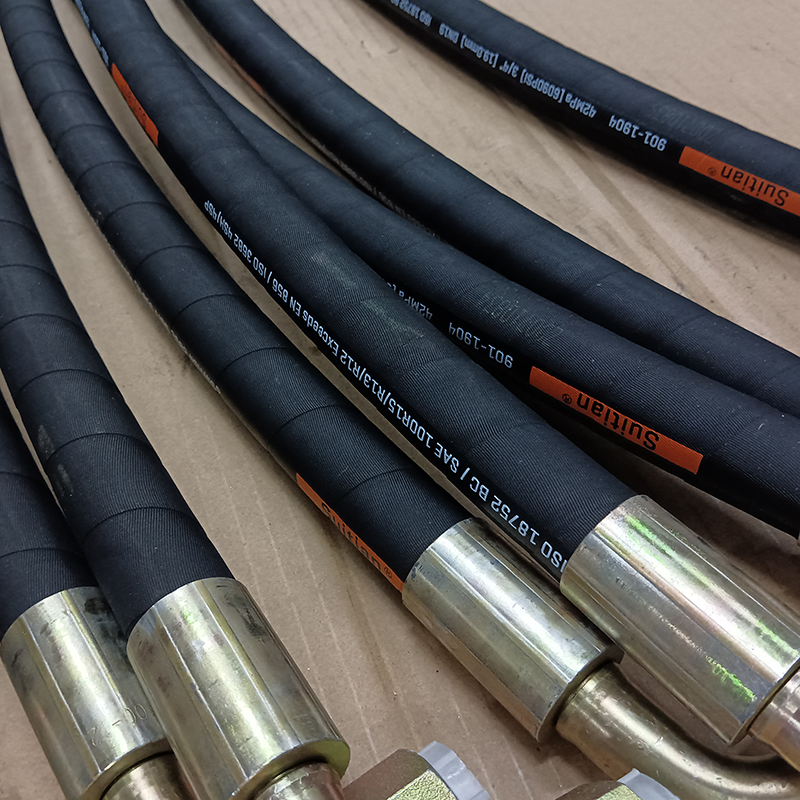Excavators need to use hydraulic hose in a number of key parts.

Here are some of the main parts used:
1. Power transmission system: The power transmission system of the excavator requires hydraulic hose to transmit high pressure hydraulic oil, so as to drive each working part. These hydraulic hose are usually connected to the hydraulic pump and hydraulic motor to ensure that the excavator can carry out normal excavation, loading and other operations.
2. Cylinder and motor: The cylinder and motor of the excavator are the key components of the excavation action. The hydraulic hose connects these components and provides them with the necessary working hydraulic oil to ensure the accuracy and stability of the excavation action.
3. Control system: The control system of the excavator also needs hydraulic hose to transmit control signals. These signals are transmitted to each control valve and actuator through the hydraulic hose to achieve accurate control of each part of the excavator.
4, auxiliary equipment: excavator auxiliary equipment, such as cooling system, lubrication system, etc., may also need hydraulic hose to transfer the relevant liquid. These hydraulic hose ensure the normal operation of the auxiliary equipment, thus maintaining the overall performance of the excavator.
Hydraulic hose plays an important role in transmitting power, controlling signal and maintaining the operation of auxiliary equipment in excavator.
Therefore, when selecting and using hydraulic hose, it is necessary to take into account its pressure resistance, wear resistance, corrosion resistance and ability to adapt to various working environments to ensure the normal operation and operational efficiency of the excavator.
At the same time, regular inspection and maintenance of the hydraulic hose is also very important, you can find and solve problems in time to avoid potential safety hazards.